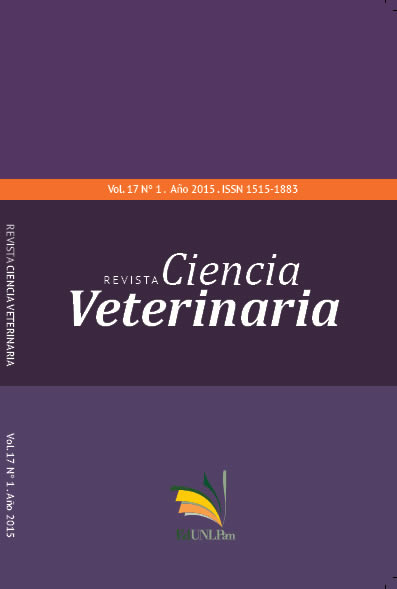Lipid composition of cell wall of three species of environmental mycobacteria and its possible role in the biofilm formations and motility by sliding
DOI:
https://doi.org/10.19137/10.19137/cienvet20151714Keywords:
Environmental mycobacteria, MALDI-TOF-MS, mycolic acids, biofilm, sliding motilityAbstract
The wall structures of Mycobacteria are usually associated with the ability to form biofilm and motility by sliding. This study was performed with three strain of Environmental Mycobacteria (MA): Mycobacterium smegmatis, Mycobacterium gordonae and Mycobacterium porcinum. The goals of this paper were: a) to establish by MALDI-TOF mass spectrometry (MS) whether there are differences in the lipid carbon chain composition in the cell wall when they are in planktonic growth or forming biofilm; b) to evaluate the relation between lipid carbon chain composition and their sliding and biofilm formation ability. M. porcinum and M. smegmatis formed biofilms of different sizes and presented motility. M. gordonae developed poor biofilm and did not move. MALDI-TOF spectra obtained from EM in a planktonic state differ from EM biofilm–grown ones in their cell–wall lipidic carbon chain composition. EM biofilm–grown spectra show a greater diversity. All biofilm–grown EM spectra present short chain mycolic acids. These results suggest the importance of these mycolic acids in the formation of biofilm, especially in its maturation. M. gordonae presented also a higher proportion of long-chain fatty acid, compared to M. smegmatis and M. porcinum. The presence of long hydrophobic chains could possibly generate a greater friction, thus reducing its motility.
Downloads
Downloads
Published
How to Cite
Issue
Section
License
Al momento de enviar sus contribuciones, los colaboradores deberán declarar , de manera fehaciente, que poseen el permiso del archivo o repositorio donde se obtuvieron los documentos que se anexan al trabajo, cualquiera sea su formato (manuscritos inéditos, imágenes, archivos audiovisuales, etc.), permiso que los autoriza a publicarlos y reproducirlos, liberando a la revista y sus editores de toda responsabilidad o reclamo de terceros , los autores deben adherir a la licencia Creative Commons denominada “Atribución - No Comercial CC BY-NC-SA”, mediante la cual el autor permite copiar, reproducir, distribuir, comunicar públicamente la obra y generar obras derivadas, siempre y cuando se cite y reconozca al autor original. No se permite, sin embargo, utilizar la obra con fines comerciales.







4.png)


7.png)



